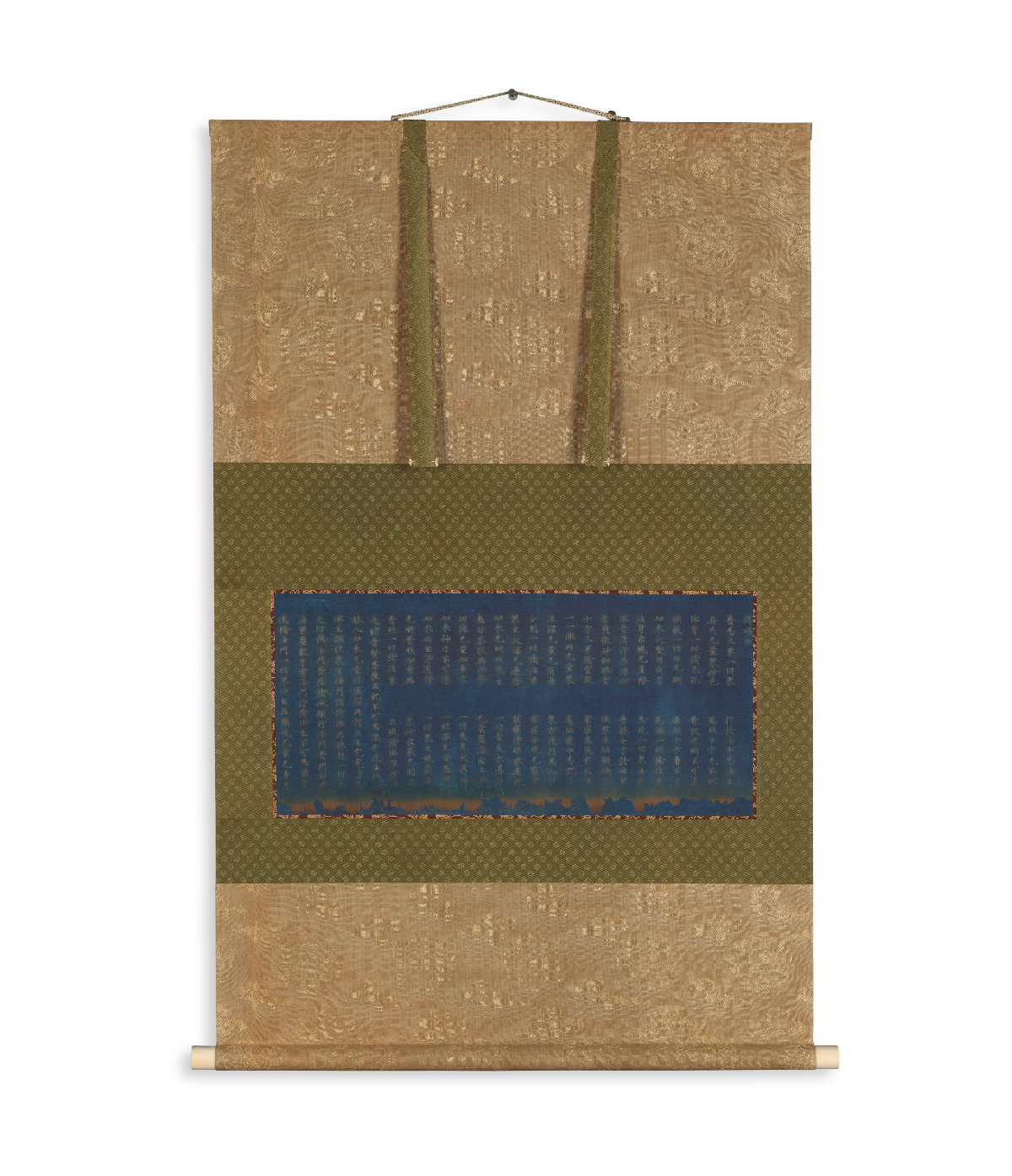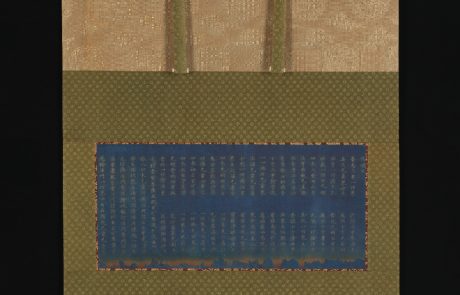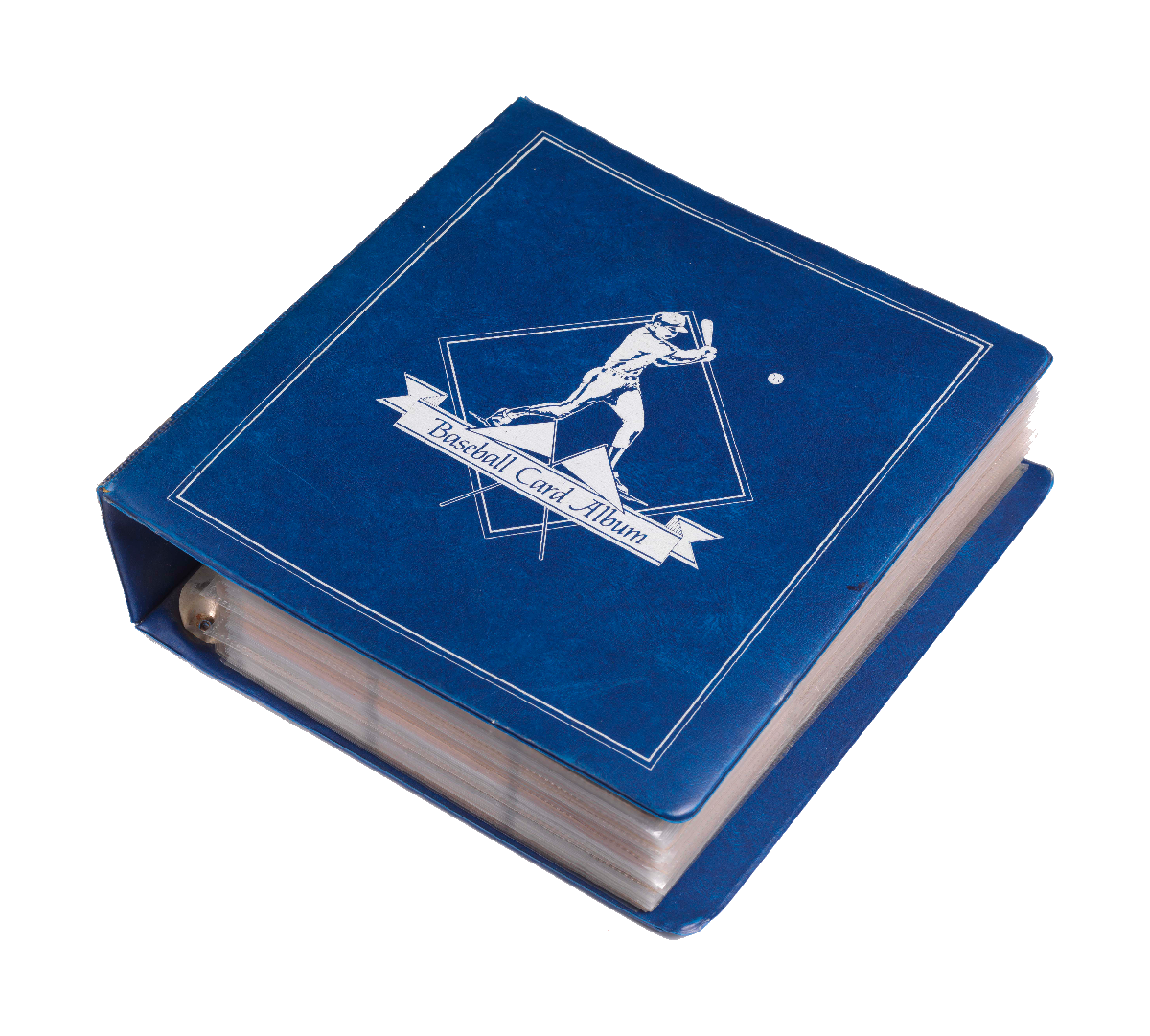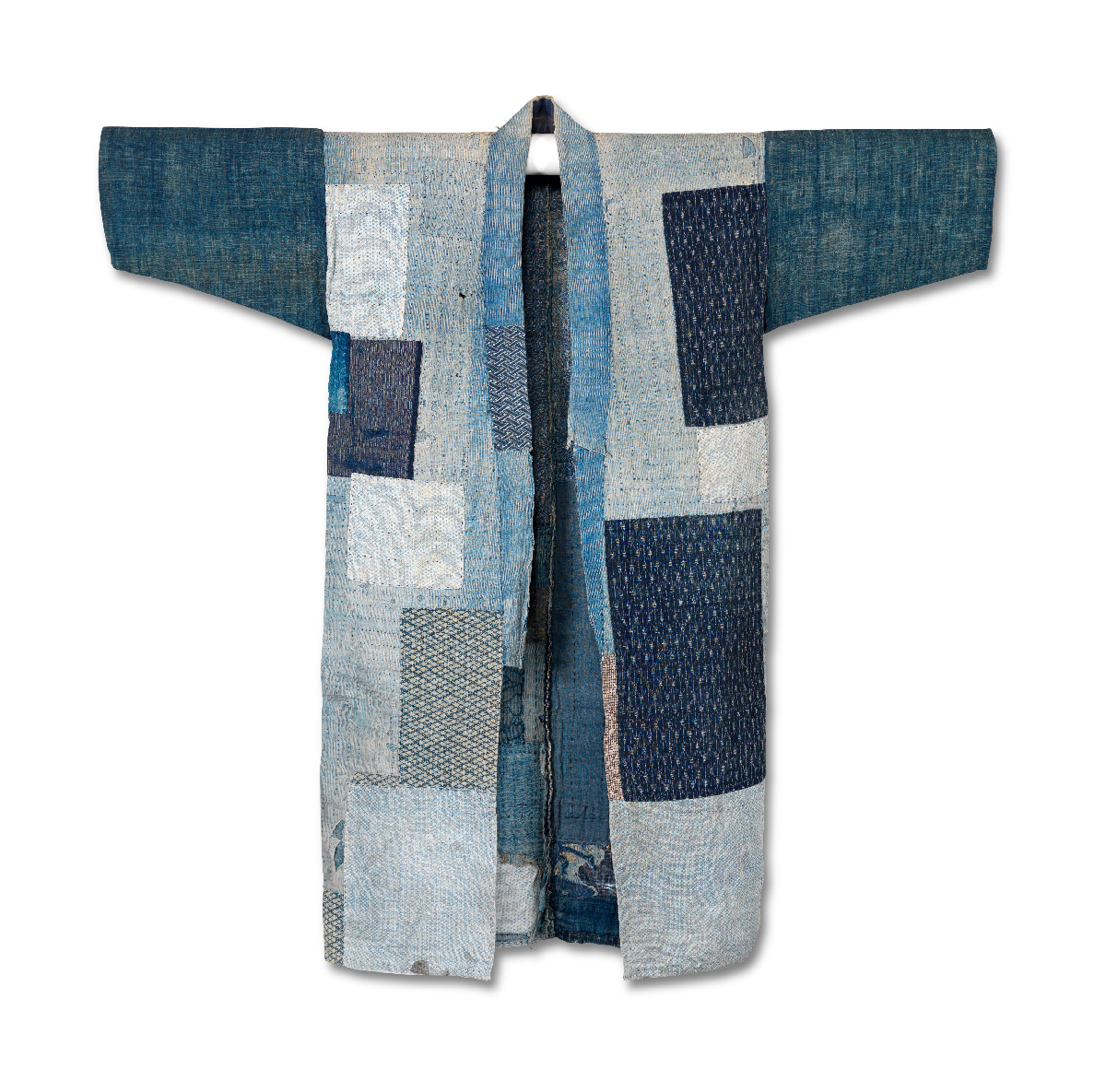Section of the Nigatsudō Burned Sutras
Fragment of the Avatamsaka (Flower Garland) Sutra, from the Nigatsudō Burned Sutras, ca. 744
Unknown maker, Japan
Fragment of a handscroll, silver pigment (gindei) on indigo-dyed paper, 9 3/4 × 21 1/8 in. (24.8 × 53.7 cm)
Mounted as a hanging scroll, date(s) unknown
The Metropolitan Museum of Art, New York City, purchase, Mrs. Jackson Burke Gift, 1978 (1981.75)
This sutra fragment belongs to a set of sixty handscrolls of the Avatamsaka (Flower Garland) Sutra, created for the Nigatsudō hall of the Tōdai-ji temple complex established in 752 CE in Nara, Japan. In 1667 a fire destroyed Nigatsudō and many of the scrolls. This fragment is among those that survived: it was later mounted as a hanging scroll in a manner that celebrates its remarkable history, still evident in its orange-tinged edges.
Hanging scrolls, such as this example, tend to be periodically relined and remounted. In Japan this was historically the work of clergy, which later developed into studio- and apprenticeship-based mounting practices known as hyōgu. Over the last fifty years, conservation practice in museums in the United States and parts of Europe has led to approaches developed for the care of these items that integrate these traditions with scientifically informed Euro-American conservation processes and guidelines.
See other items in What is Conservation?










